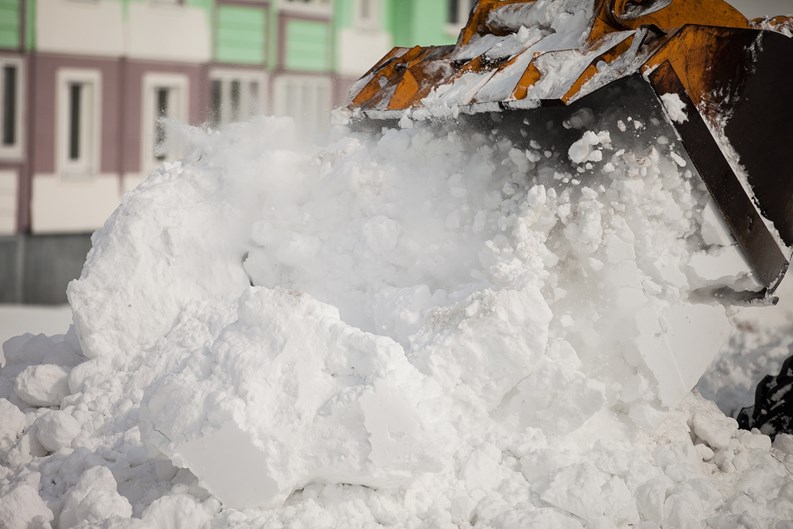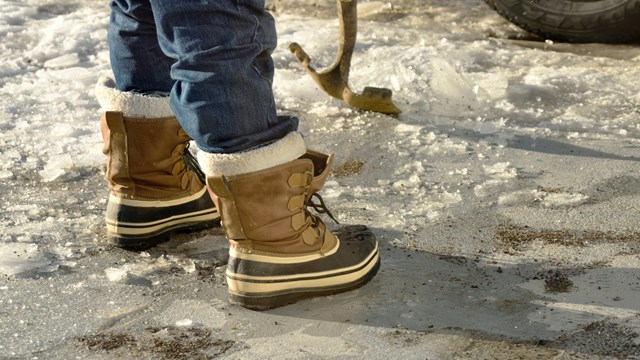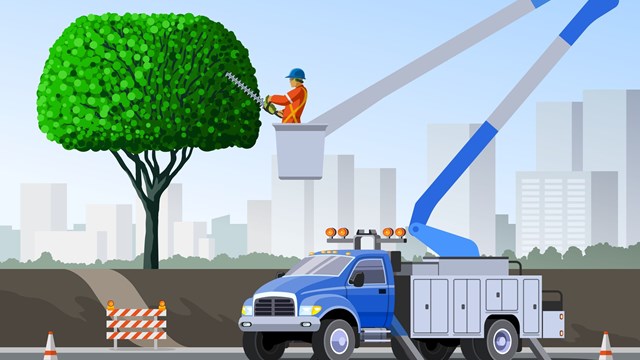Time will tell whether global warming and climate change eventually make winter – and its attendant snow, ice, sleet, and other challenging weather issues – extinct, but for now at least, the colder months can take a seasonal toll on buildings and surrounding property. With the proper planning, forethought, and communication, however, building administrators can stay ahead of this sometimes-unpleasant season. With a few tips from experts, you can confidently work to minimize the risks that snow and ice can bring.
Know Your Responsibilities
The first step in making sure your winter season responsibilities don’t catch you by surprise is familiarizing yourself with the specific laws and regulations pertaining to snow and ice maintenance in your area. Many of the locality-specific requirements can be found on municipal information websites. New regulations often go into effect before a single flake falls – so even if you think you know your responsibilities for snow removal, it might be a good idea to check in with your municipal website before receiving a potentially costly citation. Some more suburban townships also have noise ordinance laws in effect, which can make the time you have to clear the snow or ice after the fall ceases a very specific window.
A major issue for condo boards and managers is liability, especially due to slip-and-falls. “You could be liable anywhere. We’ve seen some cases against service providers or property managers where, say it’s a common area of a building and someone has snow or ice on their boots and they walk into the building and because of the wetness they can have a slip and fall. They can say that part of that was because of the exterior surfaces or not having mats inside for traction,” says Martin Tirado, CEO of the Snow & Ice Management Association, a national non-profit trade group based in Milwaukee, Wisconsin .
While the standards vary from state to state, across the country either building owners or service providers could be held accountable for slips and falls. “Anywhere there is the potential of a slip and fall, there is the potential for litigation and for someone to sue a service provider or a property owner. What it can do is really drive up the insurance costs, especially if they have claims,” says Tirado.
In general, it is safe to assume that all sidewalks, walkways and driveways on and adjacent to the property fall under property management and association responsibility. Working a regulation check into your winter prep period can also help to inform your hiring of potential snow and ice removal contractors. Snow pros advise property managers to have a meeting with potential contractors to ascertain whether a groundskeeping contractor can be trusted to do the job well, and with a minimal amount of disruption to the community and residents.
Make sure that yours is site specific and that there’s more than one plan in place for different amounts of snowfall and ice accumulation, because no two storms are alike — ranging from small accumulations to state of emergency, 100-year blizzards. Other considerations include “environmental concerns for the surrounding area, space constraints, what the ground is paved with (asphalt, paver blocks, concrete), traffic patterns —the list goes on,” says Brett Baghdoyan, business development manager at Northeast Snow & Ice Management in Woburn, Massachusetts
Know Your Property
In addition to municipal laws, individual community culture can also be an area where some preventive education can save headaches in the long run. Aaron Kurdyla, director of operations for High Tech Landscapes, which works with both residential and commercial properties in New Jersey, encourages building administrators to be communicative with members of the building community in terms of setting up personalized individual properties for a successful and safe winter season. Sometimes residents personalize outdoor space with decorations like statues and other lawn ornamentation that make the property unique. These embellishments can be hidden from view in high snowfall and may become a potential hazard in the clearing of snow along driveways and sidewalks by contractors unfamiliar with these individual property differences.
“As much as you personalize your property, it is still a community, and it is your responsibility as vendors to remove those [decorations] for safety reasons,” says Kurdyla. “The best way to do that is to communicate with residents” about prepping their lawns and driveways for a safe snow and ice removal season. “And don’t be afraid of over-communicating on these issues,” he adds. Preventive care can save residents, contractors, and administrators a lot of money in repairs in the long run.
Stay Ahead of the Season
Knowing when to focus on readiness in terms of snow removal hiring, equipment checks and supply stocks is an important first step for a successfully-managed winter season. Professionals advise starting earlier than you may think.
“Community associations should be looking into plowing companies during the summer months,” Baghdoyan says. “June to August (or even earlier) make the best times to look. Securing quotes early in the year allows flexibility for the contractor to plan for their upcoming winter and adequately fit you, the new client, into their book of business. If equipment needs to be purchased to service your location, there is time to do it. If people need to be hired, there is time to do it. Locking in a plowing contract early in the year also allows for more accurate budgeting for the CA and believe or not, could result in discounts being offered by your contractor. Contractors love to have business lined up for the future and will take a discount in some cases to ensure it stays that way if the job is worth it.”
Tirado agrees. “From the perspective of a provider, it’s a combination of personnel needed, equipment needed, salt and other de-icing materials necessary to purchase in advance to have available to service their customers and if they aren’t already, their resources will essentially be sold out,” he says.
Trevor Biebrach, director of operations for Wheeling, Illinois-based Snow Systems, offers a similar timetable, adding that building size should be considered in terms of when you start your winter prep. “Start looking early; don’t wait until the last minute,” he warns. “The bigger the property, the earlier you should be looking.”
Building administrators shouldn’t worry about overstocking their supply, either, according to Tom Canete, owner of Canete Snow and Ice Management (as well as Canete Garden Center and Canete Irrigation), based in Wayne, New Jersey. “This stuff doesn’t go bad,” he says, but adds that “If you have bagged materials, you need to store them correctly. Make sure all bagged material is under a roof when possible, and at the very least you have air flow” by storing salt on a pallet. The key is to keep it away from rain and sun while storing it for future use.
In choosing a professional removal company, Canete advises boards and managers to consider how far your contractor will have to travel once the snow starts to fall. “It’s tough to get around in,” he says. “Some of the struggle we have is horrible traffic; the roads shrink in these storms” which can make travel a problem in blizzard-level conditions.
“When interviewing a snow removal company, your best information is likely going to come from the contractor’s references and their previous record of performance,” Baghdoyan adds. “A good contractor will have multiple references from CAs or commercial entities they have worked with or currently work with. Do your research. If your association has a maintenance person or staff member with some previous snow removal experience that is able to discuss the process and walk the property with the contractor, that is ideal.”
Municipal Jurisdictions & Maintenance Efforts
It is rare for municipal snow and ice removal personnel to collaborate directly with buildings and contractors when it comes to getting rid of the cold stuff. “The only time I’ve ever seen them connecting together is in the case of a development that has a main road running through it that would run under municipality jurisdiction,” says Canete. Also, most contracts with private clearing companies provide for one clearing per storm. This can be problematic for buildings when the municipal snow clear happens after the private company has fulfilled their contract and some driveways or alleys may become re-covered with the main road dump.
Due to timetable restrictions and potential fines, private contractors will often clear client communities’ thoroughfares before municipalities reach the area for their main road obligations. As Biebrach says, “City operations tend to take their time and focus on main roads first, and residential roads are cleaned up second. Regardless of where your building or HOA is located, it’s a good idea to double-check what liabilities the contractor you hire for snow removal will take on at the time of hire.”
“Contracts are structured however your contractor or your association wants them to be structured: per-inch-per storm, an all-inclusive seasonal quote, billed by the amount of times a contractor has to perform a service, a hybrid of some of these,” Baghdoyan says. “As long as scenarios are outlined prior to the event occurring, everyone is on the same page and any services rendered are done so with a mutual understanding of necessity and scope.
“One of the most important and also most taboo items that needs to be taken into consideration when choosing a contractor is pricing. Providing snow removal services is not glamorous. It is laborious, arduous, difficult, and often requires long hours for companies and their employees,” he adds. “Higher-priced contractors come with more experience, better insurance, more capability, better plans of action and less instances of issues” like damage, slip and falls, and late attendance.
What Works
Each season brings new tools to the market, and while you may get lucky in experimenting with some of these, there’s agreement that the old reliable tried and true classic ice removal products work the best. “De-icing products are entirely dependent on the site, but in a perfect world, straight salt would be used to treat the roadways, as it allows for the initial coating of snow up to about an inch to melt enough so that when the plows come to push, they are able to get as close as possible to bare pavement,” Baghdoyan says. “Using straight salt helps the contractor ensure they will be able to clear the lots in the best possible manner without leaving a plethora of slushy build-up which can re-freeze and wreak havoc on storms to come.”
But, he cautions, the use of salt is definitely site-dependent. “Some sites are in watershed regions or regions of elevated environmental concern and require sand/salt mixtures or simply just sand. It is highly recommended that any association do their environmental due diligence prior to any winter planning. If environmental laws are broken, ignorance is not an excuse and hefty monetary penalties can be assessed,” he warns.
“The final and most important thing to consider about de-icing is again, you guessed it: pricing. Be prepared to feel like you’re paying too much for de-icing agents. De-icing is arguably the most important part of a contractor’s job as it is in direct correlation with the most likely scenario in which a contractor can be sued — slip and falls. Your contractor (especially in larger CAs with older populations) will most certainly want to use an overabundance of de-icing agents and it’s for a good reason. The safety of residents comes first. That should be a mantra adopted by your contract and your board of directors. Paying a premium for de-icing is much cheaper than getting involved in a lawsuit.”
“Good old basic rock salt works the best,” Biebrach agrees, although he adds that some municipalities are leaning towards the use of the more environmentally friendly and less corrosive Calcium Magnesium Acetate (CMA).
Staying ahead of the winter means education, communication, well-stocked supplies, and early-bird contract negotiations. These steps can help minimize the risks and potentially costly issues snow and ice accumulation can bring. With early planning and attention to details, you can be sure you’re making every effort to ensure a safe, successful, and smooth winter season for your residents, holiday season guests, and co-workers.
Kristina Valada-Viars is a freelance writer and frequent contributor to New England Condominium.










Leave a Comment